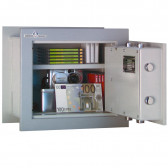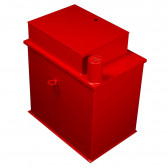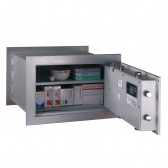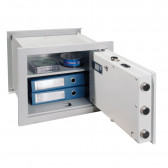The large selection of safes from different price ranges has made this protection more accessible than ever before. However, not every model is suitable for every interior. It is therefore worth paying attention not only to price, but also to other important parameters – including installation.
When choosing a specific type of safe, you should first of all be guided by its planned content. Its value, nature and size should determine the individual parameters of security measures. If you plan to invest in a safe that cannot be removed from the house or flat, you have to reckon with higher costs than in the case of free-standing or furniture safes. Attention should also be paid to burglary protection class and fire resistance. If we want to store valuables, jewellery, valuable electronics or weapons, for example, the first parameter will be the most important. In the case of protecting souvenirs, documents or dangerous substances, resistance to high temperatures in the event of a fire will be important. Installation issues are also important and often determine the choice of a particular type of safe.
For the home and the office
This is the case with floor models, which should be planned during the design phase of your home or office. Due to their specific location and the fact that they need to be surrounded by a concrete coating approximately 100 mm thick, it is necessary to create a recess during the construction work. Because of this requirement, a floor safe cannot be installed in most flats. Its big advantage, however, is that it can be camouflaged, so that its location becomes invisible to guests and more difficult for a thief to discover. Such safes are placed, for example, under carpets or even heavy furniture such as chests of drawers or wardrobes. Their resistance class is S1 and S2, similar to wall safes.
A safe behind a painting?
This type of safe also requires anchoring in the walls of the building and the preparation of a special recess, so it is better to opt for it before the final completion of the construction work. In many properties, the partition walls even prevent the installation of a safe due to their insufficient thickness – in contrast to a safe placed under the floor. However, if it is possible to install this type of safe, it can (and even must) be additionally camouflaged and matched to the character of the interior. Most often customers choose places seemingly secluded and inaccessible to third parties, such as bedroom walls or private offices, which unfortunately in the case of potential theft is quite predictable and easy to track down by a thief.
Not every safe can be built into a wall
In this case, on the other hand, the size of the planned contents of the safe can be a limitation. In addition to the dimensions of the safe, it is always necessary to add at least 100 mm of coating and an adequate reserve of floor space. The larger the safe, the heavier it is, and walls and ceilings always have a certain strength and a limited thickness. In exceptional cases, the walls and ceilings can be reinforced with an additional structure to better distribute the weight and not exceed the permissible pressure per square metre. However, it is worth thinking carefully about such a decision, because a safe is chosen for years, and its relocation will later involve masking the place where it was anchored, or may even be impossible if the safe was mounted in the wall or the floor.
You can find many articles on floor and wall safes in our blog, e.g.:





